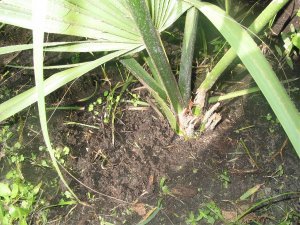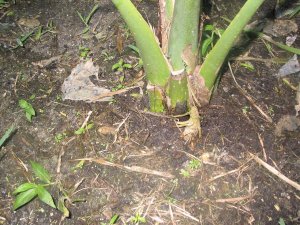- 9,565
- 28/09/07
- 121
- 223
The thread going on over HERE got me thinking.
The question was asked about variability in palms, and extended to the variability in forming heels. And whether the ability to form a heel was a unique characteristic of a species. That is, whether it was a defining characteristic of a species. In other words, could a palm the has a heel be the same species as one that doesn't.
Well my curiosity extended a little farther in that is it possible that some identical palms would form a large heel sometimes and a small heel sometimes depending on the growing conditions. Most think that the heel is to "push" a palm lower in order to anchor it better. But what if the palm "felt" that it was deep enough already, would it refrain from making a heel, or only push to the side and make a heel that may not even be noticed as a heel?
Anyway - just wondering if that could explain why there is disagreement from time to time about my "such and such" has a heel and yours doesn't, so they can't be the same. Could it be just variation in the size and noticeability of the heel, created by a different set of growing conditions?
The question was asked about variability in palms, and extended to the variability in forming heels. And whether the ability to form a heel was a unique characteristic of a species. That is, whether it was a defining characteristic of a species. In other words, could a palm the has a heel be the same species as one that doesn't.
Well my curiosity extended a little farther in that is it possible that some identical palms would form a large heel sometimes and a small heel sometimes depending on the growing conditions. Most think that the heel is to "push" a palm lower in order to anchor it better. But what if the palm "felt" that it was deep enough already, would it refrain from making a heel, or only push to the side and make a heel that may not even be noticed as a heel?
Anyway - just wondering if that could explain why there is disagreement from time to time about my "such and such" has a heel and yours doesn't, so they can't be the same. Could it be just variation in the size and noticeability of the heel, created by a different set of growing conditions?


